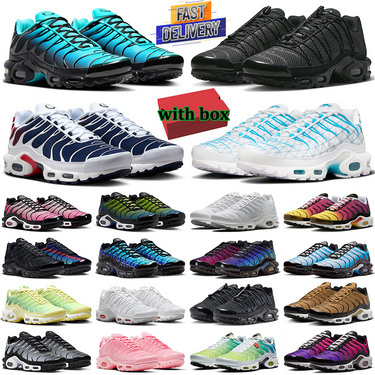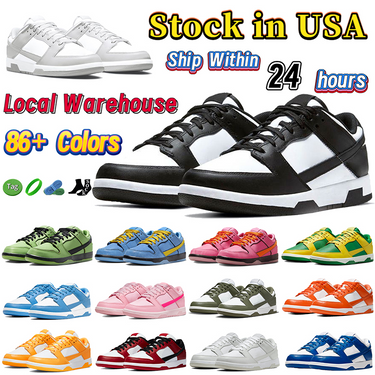Getting your shoes wet from rain or a moist environment can ruin your day.
The good news is, that you can easily prepare for any weather by simply waterproofing your shoes. Here are some simple hacks and methods to waterproof your shoes at home.

4 Methods to Waterproof Shoes
There are 4 ways to waterproof your shoes. You can apply beeswax (colorless candle), apply a waterproofing spray, use silicone shoe covers, or apply WD-40.
Here are each method explained in greater detail:
Waterproofing shoes with wax (beeswax or colorless candle)
Wax is ideal for waterproofing shoes for a few reasons.
First, it’s inexpensive and won’t cause a huge mess. It also lasts longer than most waterproofing methods, and it works on leather and cloth shoes.
If you use wax, it’s best to go for unscented and transparent wax.
While the wax is great for waterproofing, there is one minor drawback. It takes some time to apply to any type of footwear because it can be challenging to work with.
You will also need to use a hairdryer to help it set correctly during the application process.
Lastly, it’s recommended not to use melted wax. Although it’s much easier to apply, it gets everywhere very quickly and causes an unnecessary mess.
Here are the steps to waterproof shoes using wax:
1. Remove dust and light debris from the shoes
Before applying the wax, clean the shoes with a damp cloth, or wash the dirt. This ensures that the wax settles properly and any dust or light debris won’t get stuck underneath the layer of wax.
2. Test the wax in an inconspicuous area
Before you start rubbing away, test the wax on an inconspicuous part of the shoe. Doing this makes sure it won’t stain. Keep in mind that much of the contrast will be gone after the wax melts.
3. Rub the wax onto your shoes
Take either beeswax or a candle and rub the wax onto your shoes. If you’re unable to get your hands on beeswax, a clear, odorless paraffin wax candle (such as a tea light) will also do the trick.
Firmly press down and scrub to transfer as much wax as possible. Rub the wax back and forth vigorously to form a thick layer over any part of the shoe you want to make off-limits to moisture.
4. Wave a hairdryer onto the shoe
After applying the wax, take a hairdryer and place it on high.
Wave the hairdryer over the shoe until all the wax is melted. Go over the shoe slowly. You should notice the wax beginning to fade into the shoe almost instantly.
Once the wax has completely cooled down, you can now wear your shoes. If you expect your shoes to get absolutely soaked, it may be best to do two coats of wax.
Applying a waterproofing spray
Waterproof sprays don’t last as long as wax, but they are still effective for protecting your shoes. However, there are a few things to keep in mind when using a waterproofing spray.
First, a waterproofing spray works best on textile-based shoes. While it’s possible to waterproof just about any kind of shoe, you’ll get the best results with a more absorbent fabric.
Second, do keep in mind that waterproof sprays need refreshing. On average, you will need to respray your shoes with a waterproofing spray once every 15-20 days.
The weather also has a significant impact on how long the spray will last. During the summer, it’s best to refresh the spray after every 4-8 wears. As for the winter, every 2-4 wears is ideal.
Lastly, be sure to buy a high-quality waterproofing spray.
For leather or synthetic footwear, use Nikwax Fabric and Leather Waterproofing. On the other hand, Jason Markk Repel Spray works best on suede, nubuck, canvas, and nylon.
Applying a waterproofing spray on shoes is very easy. All you have to do is to follow the directions on the packaging. Generally, you will first need to make sure your shoes are clean.
Then, you want to hold the spray and coat the outside of the shoe. Make sure you are keeping the can at least 6 inches away from the shoes. Cover as much of the shoes as possible so you don’t have water creeping into corners or shoe areas.
If there’s any drippage, be sure to wipe it off with a towel. Next, store them in a well-ventilated area for about 1 to 2 days. You also want to ensure you’re spraying them in a well-ventilated area.
Using silicone shoe covers
If you want to skip the hassle of using wax or waterproofing sprays, shoe covers may be the easiest way to waterproof your shoes. They take no time at all to wear, and they work very well.
Using shoe covers is simply just slipping them on over your shoes. While there aren’t any basic use instructions, here are some other benefits of using shoe covers to waterproof your shoes:
- They can be used in various environments
- You can find them in several styles and colors
- They’re very lightweight
- Most can be reused
- Some are good for the environment
Silicone shoe covers can also help keep your feet warm without the worry of falling. They are slip-resistant and durable for slippery surfaces due to rain or snow.
More specifically, silicone shoe covers help safeguard your shoes in various types of weather. In addition, they offer an excellent snug fit and maximum protection.
Shoe covers are also made from plastic and come in different styles and lengths. For example, boot-style shoe covers are great from coverage up to your ankles.
There are also fitted shoe covers that provide extra grip so they won’t slide off during use. Some shoe covers also come with a drawstring so you can tighten or loosen them to your preference.
Applying WD-40
Many people wonder whether they can waterproof shoes with WD-40 or not.
Although this may not be a conventional method for waterproofing shoes, it’s one that surprisingly works, primarily since it’s known to protect certain leathers, textiles, and canvas.
You can waterproof shoes with WD-40 because it acts as a barrier so water cannot penetrate. It can also be used to remove salt stains from boots during the winter months.
The “WD” acronym stands for water displacement. WD-40 was designed to spray on machine parts to keep water from penetrating. Just spray it on and let it dry.
The best thing about using WD-40 as a shoe waterproofer is it dries super fast, so it will likely take much less time. An added benefit is it doesn’t create a stiff layer to shoes.
It actually does the opposite by making shoes pliable and soft, plus it’s easy to use.
To waterproof shoes with WD-40, spray your shoes outside in a well-ventilated area. Make sure to cover both the left and right shoe thoroughly. Leave them to dry for about an hour.
Unfortunately, it is not eco-friendly since the ingredients are petroleum-based. Using WD-40 will also discolor your shoes and it won’t last a long time. It also cannot be used on suede.
It’s far from the perfect waterproofer, but it is better than nothing.
FAQ on Waterproofing Shoes
Below are the most frequently asked questions surrounding waterproofing shoes. We will always add new answers right here so feel free to bookmark this page.
1. Can any shoe be waterproofed?
No matter the material, any shoe can be waterproofed. You can waterproof athletic sneakers, canvas shoes, hiking boots, suede shoes, leather shoes, and dress shoes.
However, be sure to use the right waterproofing spray for the material.
2. Can you spray shoes to make them waterproof?
You can spray shoes to make them waterproof. A waterproofing spray provides a strong and breathable barrier to repel stains and liquids from your shoes.
In fact, there are water-based sprays that have no toxic odor or harmful dyes or colors. They are safe to use on all materials including suede, nubuck, canvas, nylon, and more.
3. Does Vaseline waterproof boots?
Vaseline can help waterproof your boots.
In addition to waterproofing, it can also shine, clean, and soften the leather. The petroleum jelly in Vaseline can also help with leather cracks and enhance the color of your leather.
Maintaining Waterproofed Shoes
Properly caring for waterproofed shoes can help them last longer throughout each season. Create some wear and tear on the shoes before waterproofing them. It’s essential to do this beforehand because shoes become very stiff after applying products to them.
Keep up with refreshing the waterproof product on your shoes. As previously mentioned, it’s essential you maintain your shoes throughout specific seasons.
It’s also important to reapply when you see any product coming off.
Lastly, be sure to keep waterproofed shoes stored in a dry area free of moisture. It also helps if it’s a space that is often exposed to sunlight to rid the shoes of excess moisture.
Downsides to Waterproofing Shoes
Protecting your shoes from water through waterproofing is very helpful and, in essence, very convenient. However, like anything else, there are some downsides.
Some methods won’t entirely work and may still result in your shoes getting wet. The shoe’s flexibility may be decreased due to certain products which affect comfort.
Last but not least, moisture can get stuck inside the shoes. Before you waterproof your shoes, it’s a good idea to clean them thoroughly to get rid of excess moisture and dirt.
On the other hand, there are some benefits which include keeping your feet warm, keeping your shoes free of stains, and preventing blisters on your feet.
Related articles:






